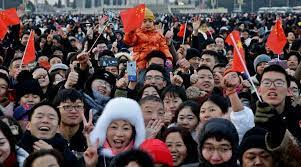There has been a series of bad news in China at a time when the nation is gearing up to usher in the Year of the Rabbit, which signifies luck, fortune, and progress. First, there was the chaotic U-turn over COVID-19 restrictions that led to a surge in cases and deaths. Second, China’s economy grew by merely 3 percent, well below the target of 5.5 percent, making it one of the worst performances in nearly four decades. Now, 2022 is another inflection point for its demography, with China’s population declining for the first time in nearly six decades, and Xi Jinping’s pro-natalist approach to combat the demographic disaster not producing the desired outcome.
Demographic distress
According to China’s National Bureau of Statistics, its population in 2021 was 1.4126 billion, which fell to 1.4118 billion in 2022. In 2021, there were 10.62 million child births, whereas the corresponding figure for 2022 was 9.56 million, a decrease of nearly 10 percent. There were 6.77 births for every thousand people last year, as compared to 7.52 in 2021, making it the lowest rate since 1949 when the Communist Party of China (CPC) started meticulously keeping records. Another facet of the demographic crisis is the skewed gender ratio of the population: There are 105 males per hundred females, which will have a bearing on China’s social stability. The data showed that the proportion of urban dwellers in the total population is around 65 percent, meaning that while China is building more cities, the decline in its population will affect its property market too.
The population crisis has stirred debate in China and demographers blame factors like the decrease in women of childbearing age (20-34 years), and a shift in the attitudes towards the concept of family and matrimony among the young and upwardly mobile. Economic factors like the cost of housing, education, employment, and expenditure with respect to childcare have also influenced attitudes towards family planning.
While some in the government and academia are trying to allay public fears regarding the population decline, Prof. Ren Yuan from Fudan University’s Population Research Institute has likened China’s current situation to the demographic decline in Europe circa 1960s and in Japan in the 1990s and argued that the population decline there did not have an impact on China’s economic growth. This is also the line echoed by Shi Yi from the China Population and Development Research Center, who has argued that some developed nations that have registered a low-birth rate have robust economies. Since the pandemic began in China in 2020, there is a view that the last three years should be considered as an aberration. Shi Yi has taken a view that the population decline may not be permanent, attributing the trend of the last three years to the impact of COVID-19 on social and economic development and the subsequent decline in income and the employment situation that forced couples to put off having children for the time being. Prof. Wang Xuebo from the School of Economics at Shanghai University of Finance and Economics posits that in addition to population, the strength of institutions, and the quality of its human capital determine economic growth, citing the examples of nations in East Asia that have low births but impressive economic growth. However, the situation in China cannot be compared to Europe, since it is largely more welcoming of migrants and uses them to offset its deficit in human capital. Several couples may have postponed having children on account of the outbreak, and consequent social and economic constraints created thereof, but the decision to persist with a failing “Zero-COVID” strategy was a political one and the blame for prolonging the people’s misery lies solely on Xi Jinping since it was promoted as his signature policy. Lastly, Kang Yi, director of the National Bureau of Statistics, has posited that historically labour supply was more than the demand and the current situation is an opportunity to invest in human capital that would lead to an improvement in population quality.
However, Prof. Zhang Lilong from the Beijing-based School of Labour Economics, Capital University of Economics and Business is of the view that changes in population size and its composition will have a bearing on economic growth as labour is an important input in any production process, and that human capital formation is a long-term process since people cannot undergo a huge transformation in their innate capabilities within a short span of time. Moreover, there are existential fears for the Chinese regime at a time when it is thinking about ways to bolster economic growth. Since economics is an interplay between demand and supply, as China’s workforce shrinks, labour costs will increase.
According to the UN World Population Prospects 2022, India is expected to take over China’s mantle as the world’s most populous nation in 2023, additionally, there is also a debate in the world community with respect to the ‘China+1 approach’ that seeks to diversify production and supply chains, which might prove to be detrimental to China since its population decline may induce nations to double down on offshoring to Southeast Asia, India and other regions.
Unable to stem the tide
In 2021, China relaxed restrictions to allow couples to have three children and resorted to giving cash payouts to families to incentivise childbirth.
While worries over slow population growth have translated into a pro-natalist approach in the Xi era, they have not made a dent as evidenced by the latest figures.
The regime’s perception of the utility of its population has undergone several shifts since the modern era in China. While Mao Zedong believed that having more children was better since it would make the nation stronger in resisting an American invasion. This notion was turned on its head in the Deng era when the one-child policy was introduced in the belief that controlling population growth would result in a smaller pool of Chinese enjoying the fruits of China’s opening up to the West in the late 1970s. However, in the Xi era, the curbs on population were dismantled to arrest the decline in population growth. This shows that the people have been a mere appendage to the political programmes of the elites governing the People’s Republic. In China’s declining population, there is a lesson for the Communist Party, that natural laws will always override man-made constraints, and that the Party must not try to make nature and biological principles subservient to its agenda.



